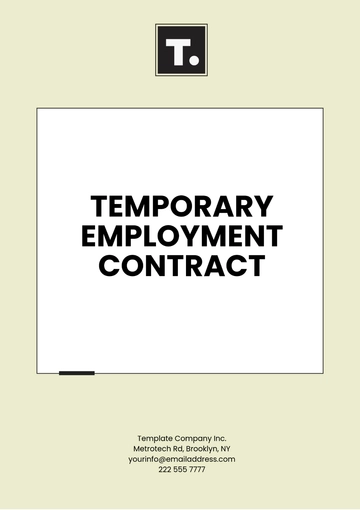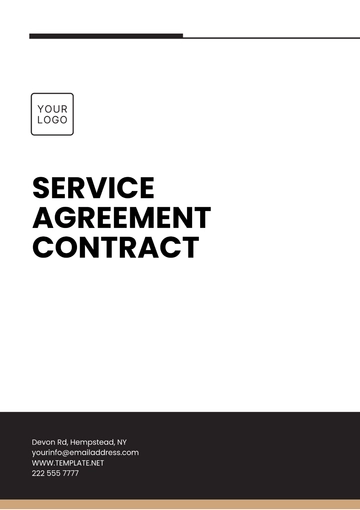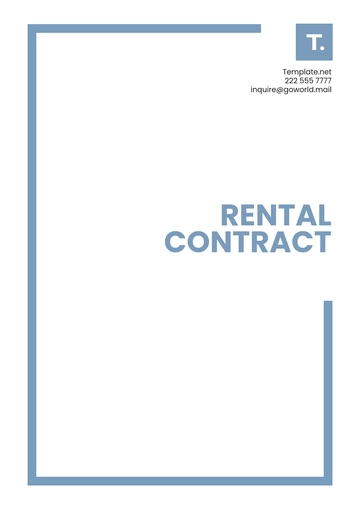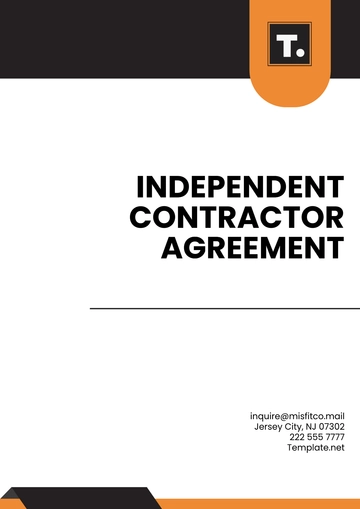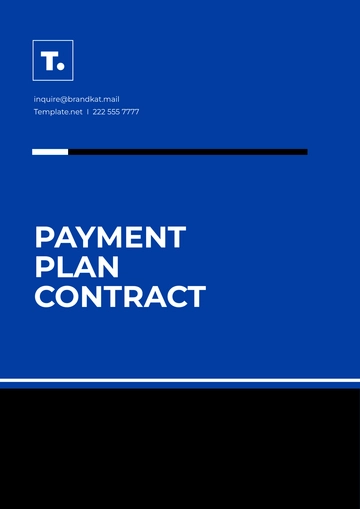Free Legal Contract Audit Manual
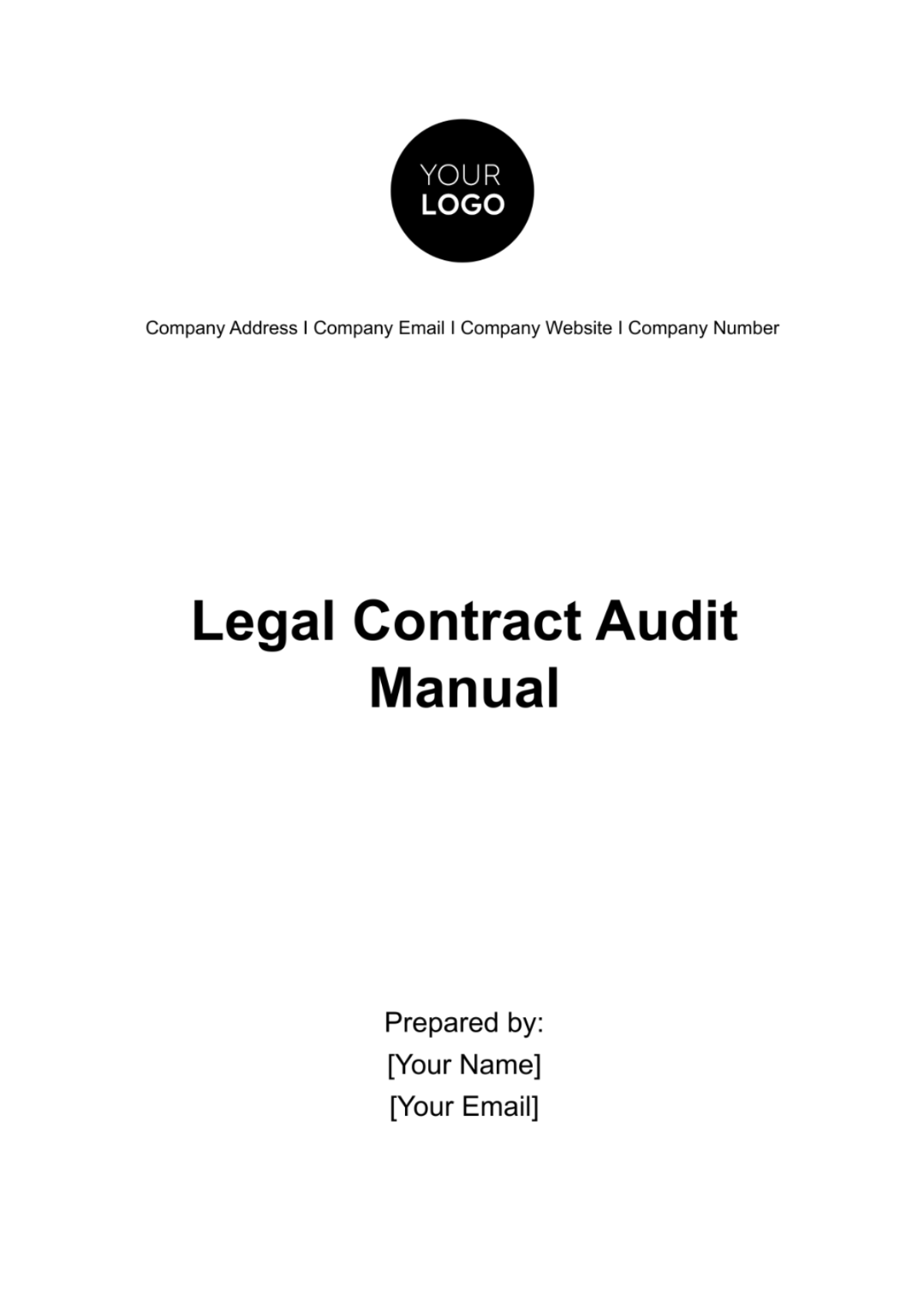
I. Introduction
The Legal Contract Audit Manual serves as the cornerstone document guiding the meticulous examination of contractual agreements within [Your Company Name]. It is designed to ensure that all contracts entered into by the organization comply with relevant legal requirements, internal policies, and industry standards. By establishing clear objectives, defining the scope, and delineating the authority of the audit process, this manual provides a structured approach to contract auditing. Through its comprehensive guidelines and procedures, the manual aims to enhance transparency, mitigate risks, and optimize contract management practices within the organization. It serves as an invaluable resource for audit teams, legal professionals, and stakeholders involved in the contract management lifecycle, fostering accountability and integrity in contractual relationships.
II. Legal Framework and Principles
Contracts within [Your Company Name] are governed by a robust legal framework encompassing principles of contract law, statutory regulations, and case precedents. The manual emphasizes the importance of adhering to fundamental legal principles such as offer, acceptance, consideration, and the intention to create legal relations. It provides guidance on interpreting and applying legal requirements to ensure the validity, enforceability, and integrity of contractual agreements. By grounding the audit process in established legal principles, the manual promotes consistency, fairness, and legal compliance in contract management practices.
III. Audit Planning and Preparation
A. Establishing Audit Objectives
Clear and concise audit objectives are essential to guide the audit process effectively. By establishing specific goals such as ensuring compliance, identifying risks, and enhancing contract performance, the audit objectives provide a framework for conducting thorough contract reviews. They serve as a roadmap for audit team members, aligning their efforts with the overarching goals of the audit process.
B. Identifying Audit Scope and Criteria
Defining the audit scope and criteria is crucial to determine the boundaries and focus areas of the audit. The audit scope encompasses the types of contracts to be reviewed, the timeframe for audit coverage, and the specific criteria for assessing contract compliance. It ensures that the audit remains targeted and comprehensive, addressing key areas of concern while optimizing resource utilization.
C. Developing Audit Plan and Timeline
The audit plan outlines the systematic approach and timeline for conducting contract audits. It includes key milestones, deadlines, and allocation of resources to ensure the timely completion of audit activities. By mapping out the audit process in advance, the audit plan facilitates effective coordination, communication, and monitoring of audit progress.
D. Allocating Resources and Responsibilities
Assigning roles and responsibilities to audit team members is essential to leverage their expertise and ensure accountability throughout the audit process. Clear delineation of responsibilities, along with adequate resource allocation, enhances efficiency, reduces duplication of efforts, and promotes collaboration among team members.
IV. Contract Documentation and Management
A. Types of Contracts Covered
The auditing process covers all forms of contractual agreements that have been entered into by the designated organization, [Your Company Name]. This coverage extends to a wide-ranging set of contracts including but not limited to, procurement contracts that are drawn up for acquiring goods and services, service agreements that outline the performance of agreed tasks, lease agreements which establish the terms for renting or leasing property, and employment contracts created to define the terms of employment. This auditing process assures that a thorough and broad spectrum of contracts is put under review. This applies across the board, without exception, to all contracts regardless of their nature or complexity.
B. Documenting Contract Information
The process of centralizing the documentation of contract information is of major significance in order to streamline and enhance the efficiency of contract management, as well as audit processes. This is a pivotal part of the contract lifecycle management procedure. Essential contract details such as the terms of the contract, the parties involved in the contractual agreement, the financial value attributed to the contract, and key dates integral to the contract’s lifecycle are methodically recorded. Following this recording process, the details are stored and continuously maintained in a dedicated contract repository that operates from a centralized location. This level of organization aids in easier accessibility and management, allowing for a smoother and more proficient management and auditing process. This centralized repository acts as a significant tool for contract administration, as it offers critical information at a glance.
C. Contract Repository and Management System
A robust contract management system is being employed as a means to deliver systematic storage, organization, and tracking of contract documents as well as any pertinent information that may accompany them. This system not only hosts the ability to offer secure access solely to those who have been authorized to use it but also presents the guarantee of managing the control of different versions of documents. Furthermore, the system conveniently facilitates the process of retrieving contract documents whenever they are required for the purposes of conducting audits.
V. Contract Review Procedures
A. Pre-Audit Preparation
Thorough pre-audit preparation is essential to ensure the smooth execution of contract review activities. It involves reviewing the audit plan, gathering necessary resources and tools, and coordinating with relevant stakeholders to obtain access to contract documents and information.
B. Gathering Contract Documents
The audit team systematically collects contract documents from the contract management system, ensuring that all relevant contracts are included in the audit sample. The process involves verifying the completeness and accuracy of contract documentation and addressing any discrepancies or missing information.
C. Reviewing Contract Terms and Conditions
Contract terms and conditions are meticulously reviewed to assess compliance with legal requirements, organizational policies, and industry standards. The review process involves analyzing contract language, identifying potential risks and obligations, and ensuring clarity and consistency of contractual provisions.
D. Assessing Compliance with Legal Requirements
Contracts are evaluated to ensure compliance with applicable laws, regulations, and contractual requirements. The assessment involves verifying adherence to statutory requirements, licensing obligations, and other legal obligations relevant to the contract.
E. Evaluating Contract Performance Metrics
Contract performance metrics are analyzed to assess the achievement of contractual objectives and the effectiveness of contract management practices. Key performance indicators such as delivery timelines, quality standards, and financial benchmarks are evaluated to gauge contract performance and identify areas for improvement.
VI. Risk Assessment and Mitigation
A. Identifying Contract Risks
A comprehensive risk assessment is carried out by the organization. The objective of this risk assessment is to meticulously identify potential risks that may be associated with any contractual agreements that they enter. There is a myriad of risks that may come into play, and these could include financial risks that affect the company's capital or profits, legal risks that could potentially result in lawsuits or other legal issues, operational risks that affect the day-to-day operations of the company, and reputational risks that could cause harm to the company's public image. These different risks, if realized, could significantly impact the objectives of the organization as well as its ability to operate effectively.
B. Evaluating Impact and Likelihood of Risks
When potential risks are identified, they are assessed based on the potential impact they may have as well as the frequency with which they are likely to occur. This evaluation process considers a variety of factors, such as the value of the contract, the complexity of the situation, the conditions of the external market, and the regulatory requirements that must be adhered to. Each of these elements plays a crucial role in determining the overall significance of the risks that have been identified.
C. Developing Risk Mitigation Strategies
Strategies for mitigating risks are designed and put into action with the aim of effectively addressing any risks and vulnerabilities that have been identified. Various different measures can be adopted to lessen these risks, including safeguards written into contracts, plans designed for dealing with emergencies or unforeseen events, coverage provided by insurance, and proactive steps taken to minimize or even eliminate potential risks entirely.
VII. Compliance Assessment
A. Regulatory Compliance Review
Contracts undergo a rigorous review to ensure compliance with relevant laws, regulations, and statutory requirements. The audit team assesses adherence to legal provisions governing contract formation, execution, and performance, including statutory limitations, licensing obligations, and regulatory reporting requirements.
B. Internal Policy Compliance Review
Contracts are evaluated to ensure alignment with internal policies, procedures, and organizational guidelines. The audit team verifies compliance with procurement policies, code of conduct standards, conflict of interest policies, and other internal controls established by the organization.
C. Industry Standards Compliance Review
Contractual agreements are scrutinized to ensure conformity with industry-specific standards, best practices, and ethical guidelines. The audit team assesses compliance with quality standards, safety regulations, environmental requirements, and industry norms relevant to the organization's operations.
D. Contractual Obligations Compliance Review
Performance under contracts is evaluated to ensure adherence to contractual obligations and commitments. The audit team verifies compliance with contractual terms, including delivery schedules, payment obligations, reporting requirements, and other contractual provisions.
VIII. Audit Testing and Sampling
A. Selecting Samples for Testing
Samples of contracts are strategically selected for testing based on risk assessment results, contract value, and significance to the organization. The audit team employs sampling methodologies such as random sampling, stratified sampling, or judgmental sampling to ensure representative coverage of contract types and categories.
B. Conducting Document Reviews
Contract documents undergo comprehensive reviews to identify deviations from standard contract terms, non-compliance with legal requirements, and inconsistencies in contractual provisions. The audit team analyzes contract language, terms, and conditions to assess compliance and identify areas of concern.
C. Performing Transaction Testing
Transactions under contracts are tested to validate compliance with contractual obligations, payment terms, and performance requirements. The audit team examines transactional records, invoices, receipts, and other supporting documentation to verify the accuracy and completeness of contract-related transactions.
D. Validating Compliance with Sampling Methods
The results of audit testing and sampling are validated to ensure the accuracy and reliability of findings. The audit team verifies compliance with sampling methodologies, assesses the representativeness of sampled contracts, and validates the consistency of audit results with established criteria and objectives.
IX. Audit Findings and Reporting
A. Documenting Audit Findings
The findings of any audit are documented with meticulous care in a thorough and comprehensive report. This report is not limited to just showcasing the findings but also incorporates a summary of the audit processes that were undertaken. It outlines the scope of the audit as well as the objectives that were intended to be achieved. Further, the report provides an in-depth and thorough analysis, laying out descriptions of the audit findings. Notably, observational notes made by the auditing party are provided in a detailed manner. The purpose of these descriptions and observations is to highlight the areas where improvement can be made. The report also includes insightful recommendations for improvement, provided based on the audit findings and observations.
B. Identifying Deviations and Non-Compliance
In the process of evaluating an organization's performance and adherence to contractual requirements, various issues may be identified. These might include instances where the organization is not in compliance with specific directives or requirements, deviations from agreed-upon contractual obligations, and certain areas of concern that could potentially affect operations. Once these issues are identified, they are sorted and categorized. The level of categorization is largely influenced by three key considerations - the severity of the issue, the impact or implications it might have on the organization, and its significance in relation to the overall objectives and operations of the organization.
C. Reporting Audit Results to Management
The results yielded from the audit are conveyed to the management team in a manner that is unambiguous, succinct, and timely. This enables the management to quickly understand and appropriately react to the findings. The report generated as a result of the audit, outlines not only the main findings and points of interest but also provides meticulous recommendations for the management to consider. Moreover, a comprehensive analysis is conducted to determine any potential risks and implications, which are also included in this report. In addition, the report also offers suggestions for possible courses of action to address the identified issues. This detailed and comprehensive report designed to provide management with feasible solutions and greater insights into the audit findings.
D. Recommendations for Improvement
Recommendations are provided to management for remedial actions, enhancements to contract management processes, and preventive measures to mitigate future risks. The audit team collaborates with stakeholders to develop actionable strategies and implement effective solutions.
X. Remediation and Follow-Up
A. Corrective Action Planning
The management team thoroughly formulates a detailed plan of corrective action. This plan has been designed specifically to address and tackle the various issues that have been identified previously, as well as deficiencies and areas where non-compliance has occurred. The components of this corrective action plan include the designation of responsibility for the corrective actions that need to be taken. This task is assigned to specific individuals or teams based on their skills and roles. Also, the action plan clearly stipulates the timelines established for the execution of the corrective actions. This is to ensure the work is completed strategically and in a timely manner. Finally, the plan also emphasizes the allocation of necessary resources as a crucial step. These resources are mainly financial and manpower resources, deployed in a calculated manner, which are crucial to aid and support the remediation efforts effectively and efficiently.
B. Implementing Remedial Measures
Remedial measures are implemented in accordance with the corrective action plan, ensuring timely resolution of identified issues and deficiencies. Management communicates changes, updates, and revisions to relevant stakeholders and monitors the progress of remediation efforts.
C. Monitoring and Tracking Follow-Up Actions
The progress of remediation efforts is monitored and tracked to ensure compliance with established timelines and objectives. The audit team conducts follow-up reviews, assessments, and validations to verify the effectiveness of remedial measures and address any residual risks or concerns.
D. Evaluating Effectiveness of Remediation
The effectiveness of the efforts applied in the remediation process is base on multiple factors. This includes whether the desired outcomes have been achieved, and if identified risks have been reduced. Alongside these factors, feedback gathered from stakeholders involved in the process and members of the audit team also contributes to the evaluation of the effectiveness of the remediation efforts. In order to enhance the effectiveness and efficiency of future audit processes, lessons learned and best practices identified during the remediation process are documented. This documented information is then incorporated into the design and implementation of future audit processes.
- 100% Customizable, free editor
- Access 1 Million+ Templates, photo’s & graphics
- Download or share as a template
- Click and replace photos, graphics, text, backgrounds
- Resize, crop, AI write & more
- Access advanced editor
Discover the ultimate solution for streamlined contract auditing with Template.net's Legal Contract Audit Manual Template. This editable and customizable template provides a comprehensive framework for ensuring legal compliance and risk mitigation. With the innovative AI Editor Tool, effortlessly tailor the manual to your organization's needs. Elevate your contract management processes with this essential resource from Template.net.
You may also like
- Rental Contract
- Contractor Contract
- Contract Agreement
- One Page Contract
- School Contract
- Social Media Contract
- Service Contract
- Business Contract
- Restaurant Contract
- Marketing Contract
- Real Estate Contract
- IT Contract
- Cleaning Contract
- Property Contract
- Supplier Contract
- Partnership Contract
- Food Business Contract
- Construction Contract
- Employment Contract
- Investment Contract
- Project Contract
- Payment Contract
- Student Contract
- Travel Agency Contract
- Startup Contract
- Annual Maintenance Contract
- Employee Contract
- Gym Contract
- Event Planning Contract
- Personal Contract
- Nursing Home Contract
- Law Firm Contract
- Work from Home Contract
- Software Development Contract
- Maintenance Contract
- Music Contract
- Amendment Contract
- Band Contract
- DJ Contract
- University Contract
- Salon Contract
- Renovation Contract
- Photography Contract
- Lawn Care Contract







